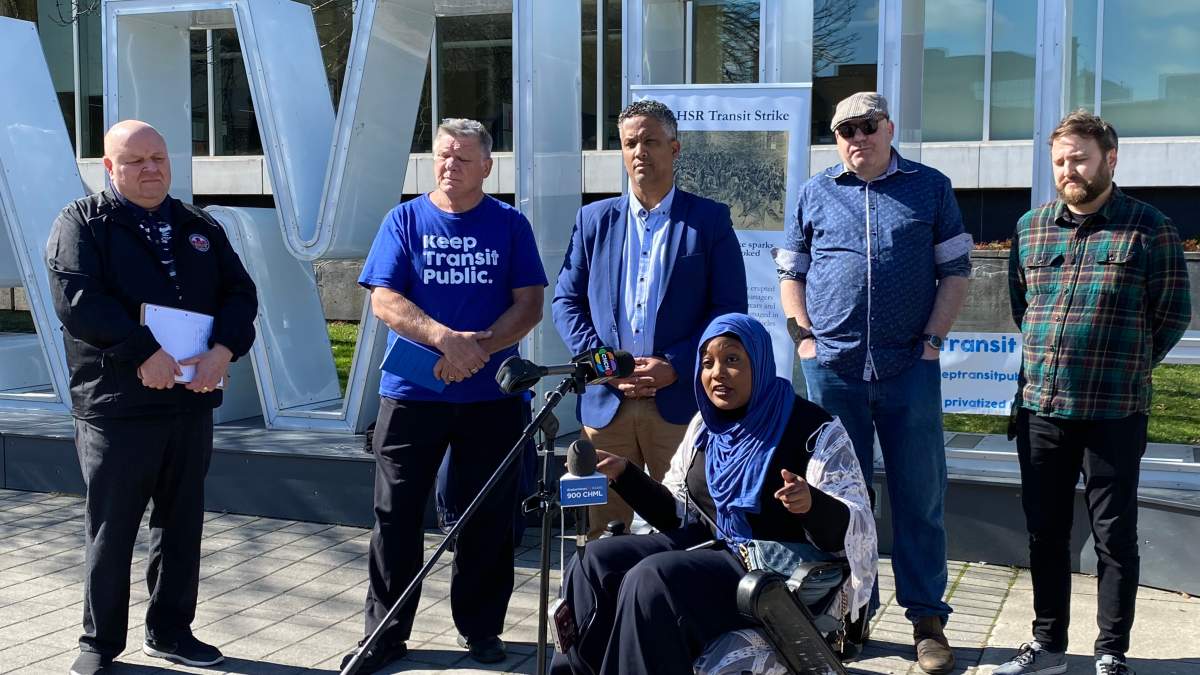A coalition seeking to localize the operation of Hamilton’s forthcoming $3.4-billion light-rail transit (LRT) system laid out their case in front of city hall Monday ahead of a committee presentation saying private contractors should do it.

Poor service, high fares and a union legal challenge are negatives the Keep Transit Public Coalition theorize will happen should councillors opt to go with a staff analysis recommending the service be put in the hands of a third party.
Amalgamated Transit Union (ATU) Local 107 boss Eric Tuck insists four clauses in their collective agreement, including a provision for handling any new B-Line service, would violate that accord and is something they can go to court over.
“They agreed that when there’s a conversion of any existing services, and there’s no doubt about it — this is a conversion of the B-Line service, that work will be ATU 107,” Tuck said.
“It also talks about any new services. Any new services within the urban transit boundary will be operated by ATU Local 107.”
Hamilton Centre MP Matthew Green and MPP Sarah Jama were others who added their voices Monday to keep the project local.
“We know that having union work in this city protects good wages, protects good pensions and great jobs,” said Green.
“That’s fundamentally what this is about. This is about sticking with the promise that we had on this project 10 years ago.”

Get daily National news
The final analysis from the LRT subcommittee goes before the general issues committee Wednesday and believes taking on a private contractor will be low-cost, provide greater cost certainty and minimize the city’s operational risk.
“(It) minimizes the risks associated with the transitions from the design and construction phase to the start-up,” an excerpt from the report said. “Commissioning operations and maintenance phases as a single third-party entity would be responsible for all activities.”
Similar to Waterloo’s ION network, which a third-party international transportation operator runs, the framework would have the contractor launch the system and operate it for the first decade giving the city an option to take it over afterwards.
But despite the recommendation, the city doesn’t have power over who ultimately controls LRT operations since most elements of the project fall under the purview of Metrolinx.
Hamilton Community Benefits Network executive director Karl Andrus said despite the province having the last word, he believes the city must advocate for HSR control since local users essentially will pay for operation and maintenance through fares.
“We were promised community benefits and affordable housing from this project. It has delivered neither so far,” Andrus submitted.
“One of the ways that city council can ensure this project delivers on the aspirations of all Hamiltonians is by asking that it be kept public and deliver on good, decent jobs.”
Ward 2 Coun. Cameron Kroetsch is taking a similar stance and plans to advance an amendment voting down the LRT subcommittee recommendation.
His amendment hopes to get council on board with a model that recommends the municipality perform all aspects of operational activities except facility operations.
In September, the LRT subcommittee received the second of three reports for councillors outlining four potential operation models which included complete city control or full privatization of day-to-day operations.
Two other plans split the operation of the line between city staff and a third party.
A fifth model, which didn’t make the final cut, sought to put all maintenance on the line in the city’s hands. However, the director of the LRT project office, Abdul Shaikh, said Metrolinx insisted on optioning that out to a third party.












Comments